Overview
Carbide inserts for wood have revolutionized woodworking by providing precision, durability, and efficiency. These tiny, powerful tools are essential for woodturners, carpenters, and DIY enthusiasts alike. They come in various shapes and sizes, each tailored for specific tasks. In this comprehensive guide, we’ll delve into everything you need to know about carbide inserts for wood, from their types and applications to selecting the right one for your project.
What Are Carbide Inserts for Wood?
Carbide inserts are replaceable cutting edges used in woodworking tools. They are made from a composite material, primarily tungsten carbide, which is exceptionally hard and wear-resistant. These inserts fit into holders on tools like lathes, ensuring a sharp, consistent cutting edge that can be easily replaced when worn.
Benefits of Using Carbide Inserts for Wood
- Durability: Carbide inserts last much longer than traditional steel blades.
- Precision: They provide a consistently sharp edge, ensuring smooth, accurate cuts.
- Efficiency: Easily replaceable inserts reduce downtime and increase productivity.
- Versatility: Suitable for a wide range of woodworking applications, from turning to milling.
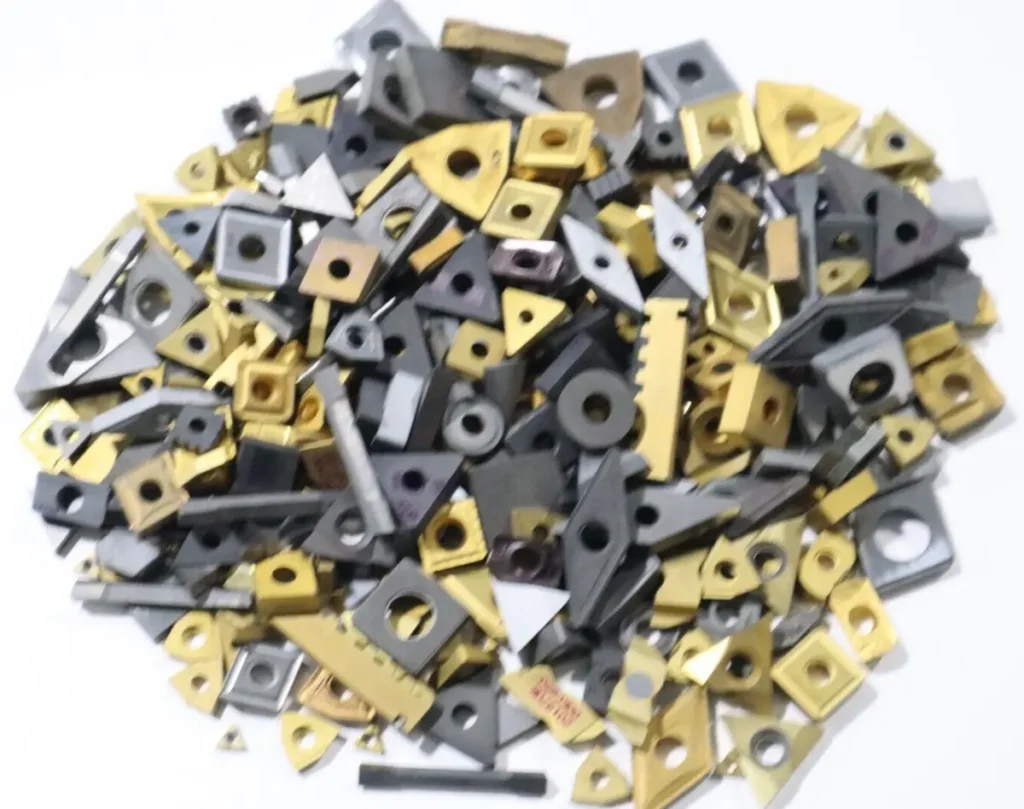
Types of Carbide Inserts for Wood
Different woodworking tasks require different types of carbide inserts. Here’s a look at some of the most common types:
| Type | Description |
|---|---|
| Square Inserts | Ideal for roughing and facing cuts, providing a broad cutting edge. |
| Round Inserts | Perfect for smooth, finishing cuts and fine detailing. |
| Diamond Inserts | Best for intricate detail work and precision cutting. |
| Triangular Inserts | Versatile, used for both roughing and finishing, depending on the orientation. |
| Rectangular Inserts | Suitable for deep cutting and grooving operations. |
| Elliptical Inserts | Specialized for turning applications requiring a large, smooth cutting surface. |
| Octagonal Inserts | Used for specialized turning tasks where multiple cutting edges are advantageous. |
| Pentagonal Inserts | Provides a combination of roughing and finishing capabilities with multiple edges. |
| Hexagonal Inserts | Offers multiple edges for extended use, suitable for various turning tasks. |
| Custom Shapes | Designed for specific applications or to fit unique tool holders. |
Carbide Inserts for Wood Application
Each type of carbide insert is suited to particular applications, enhancing their efficiency and performance.
| Application | Insert Type |
|---|---|
| Roughing | Square, Triangular, Rectangular |
| Finishing | Round, Diamond, Elliptical |
| Detail Work | Diamond, Round, Pentagonal |
| Grooving | Rectangular, Triangular |
| General Turning | Hexagonal, Octagonal, Square |
| Specialized Tasks | Custom Shapes |
Material Properties of Carbide Inserts for Wood
Understanding the material properties helps in choosing the right insert for specific tasks.
| Property | Description |
|---|---|
| Hardness | Very high, allowing for prolonged cutting life and resistance to wear. |
| Toughness | Moderate, balancing hardness to avoid brittleness. |
| Thermal Stability | Excellent, maintains cutting edge even at high temperatures. |
| Wear Resistance | Superior, ensuring the insert remains sharp over extended periods. |
| Corrosion Resistance | High, protects against rust and material degradation. |
Composition and Characteristics
Carbide inserts are composed of a mix of metal powders, primarily tungsten carbide, and cobalt.
| Component | Properties and Characteristics |
|---|---|
| Tungsten Carbide | Provides the core hardness and wear resistance. |
| Cobalt | Acts as a binder, imparting toughness and reducing brittleness. |
| Tantalum Carbide | Adds further hardness and improves thermal stability. |
| Titanium Carbide | Enhances wear resistance and strength, often used in specialized inserts. |


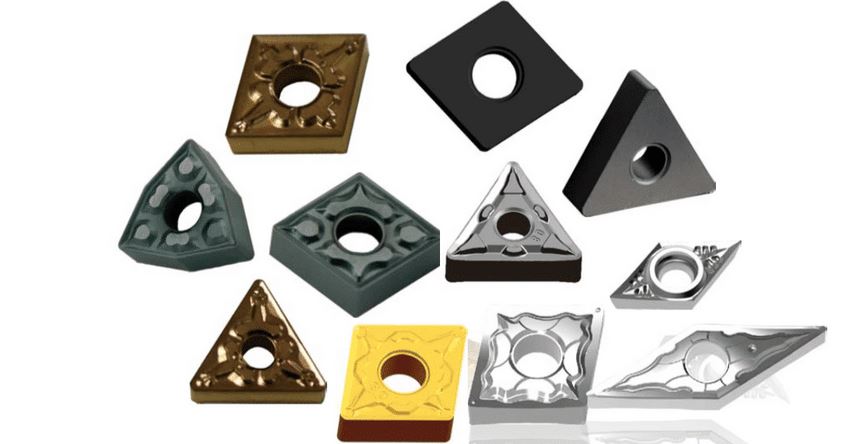
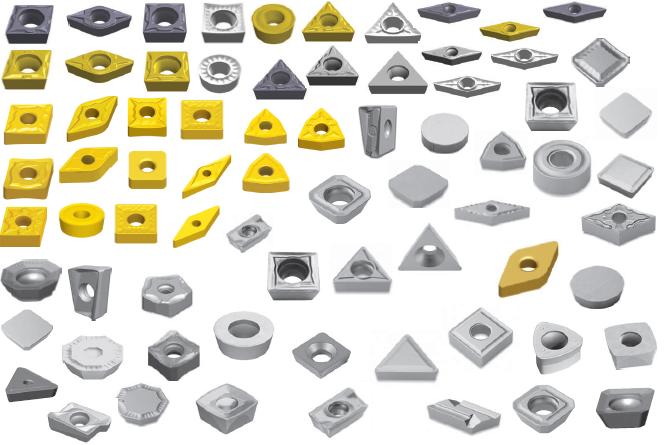
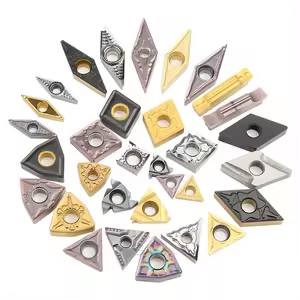
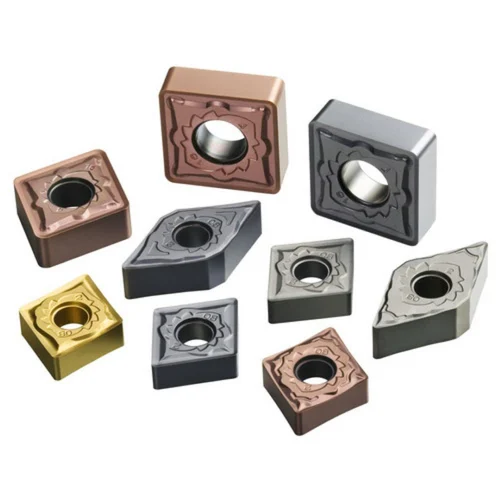
Hardness, Strength, and Wear Resistance
Comparing different aspects of the material properties:
| Property | Measurement |
|---|---|
| Hardness (Vickers) | 1600 – 2000 HV |
| Compressive Strength | 500 – 700 kpsi |
| Wear Resistance | High, maintaining cutting edge integrity over time. |
Specifications, Sizes, and Shapes
Carbide inserts come in various sizes and shapes to fit different tool holders and meet diverse woodworking needs.
| Shape | Common Sizes (mm) |
|---|---|
| Square | 12×12, 14×14, 16×16 |
| Round | Diameter 10, 12, 15, 20 |
| Diamond | 11×5.5, 12×6, 14×7 |
| Triangular | 10×10, 12×12, 15×15 |
| Rectangular | 10×20, 12×24, 16×32 |
| Elliptical | 10×15, 12×18, 14×22 |
| Octagonal | 12×12, 14×14 |
| Pentagonal | 10×10, 12×12 |
| Hexagonal | 12×12, 14×14 |
| Custom Shapes | Based on specific requirements and tool designs. |
Suppliers and Pricing Details
Different suppliers offer a range of carbide inserts at varying prices. Here’s a snapshot of some popular suppliers and their pricing.
| Supplier | Insert Type | Price Range (USD) | Contact |
|---|---|---|---|
| XYZ Tools | Square, Round | $5 – $20 | www.xyztools.com |
| ABC Industrial | Diamond, Triangular | $7 – $25 | www.abcindustrial.com |
| Carbide Masters | Rectangular, Elliptical | $6 – $22 | www.carbidemasters.com |
| Precision Tools | Octagonal, Pentagonal | $8 – $28 | www.precisiontools.com |
| ProCut Supplies | Hexagonal, Custom Shapes | $10 – $30 | www.procutsupplies.com |
How to Select the Right Carbide Inserts for Wood
Choosing the right carbide insert involves considering several factors, including the type of wood, the desired finish, and the specific application.
| Selection Factor | Considerations |
|---|---|
| Type of Wood | Hardwoods require harder inserts, while softer woods can use standard grades. |
| Finish Quality | Round and diamond inserts for smooth finishes; square and triangular for rough cuts. |
| Application | Specific tasks like grooving or detailing might need specialized insert shapes. |
| Tool Compatibility | Ensure the insert fits the tool holder correctly. |
| Cost vs. Durability | Higher upfront costs for premium inserts can lead to longer life and reduced replacement frequency. |
| Supplier Reliability | Choose reputable suppliers known for quality and consistency. |
Advantages and Limitations of Carbide Inserts
When choosing carbide inserts, it’s important to weigh their benefits against potential drawbacks.
| Advantages | Limitations |
|---|---|
| Durability | Higher initial cost |
| Precision | Can be brittle under extreme stress |
| Ease of Replacement | Requires specific tool holders |
| Versatility | Limited flexibility in shape customization |
| Efficiency | Sometimes harder to find specific models |

FAQ
What are carbide inserts for wood?
Carbide inserts for wood are replaceable cutting edges used in various woodworking tools. Made from tungsten carbide, they provide a sharp, durable cutting surface.
Why should I use carbide inserts instead of traditional blades?
Carbide inserts last significantly longer, provide consistent precision, and are easily replaceable, reducing downtime and increasing efficiency.
What types of carbide inserts are available for woodworking?
There are many types, including square, round, diamond, triangular, rectangular, elliptical, octagonal, pentagonal, hexagonal, and custom shapes.
How do I choose the right carbide insert for my project?
Consider the type of wood, desired finish, specific application, tool compatibility, and cost vs. durability. Reputable suppliers can also provide guidance based on your needs.
Where can I buy carbide inserts for wood?
Suppliers such as XYZ Tools, ABC Industrial, Carbide Masters, Precision Tools, and ProCut Supplies offer a range of carbide inserts.
Are carbide inserts more expensive than traditional blades?
While carbide inserts have a higher initial cost, their durability and longer lifespan often make them more cost-effective in the long run.
Conclusion
Carbide inserts for wood are indispensable tools that enhance precision, efficiency, and durability in woodworking. By understanding the different types, applications, and selection factors, you can make informed choices to optimize your woodworking projects. Whether you’re a seasoned professional or an enthusiastic hobbyist, investing in the right carbide inserts can significantly improve your craft.




